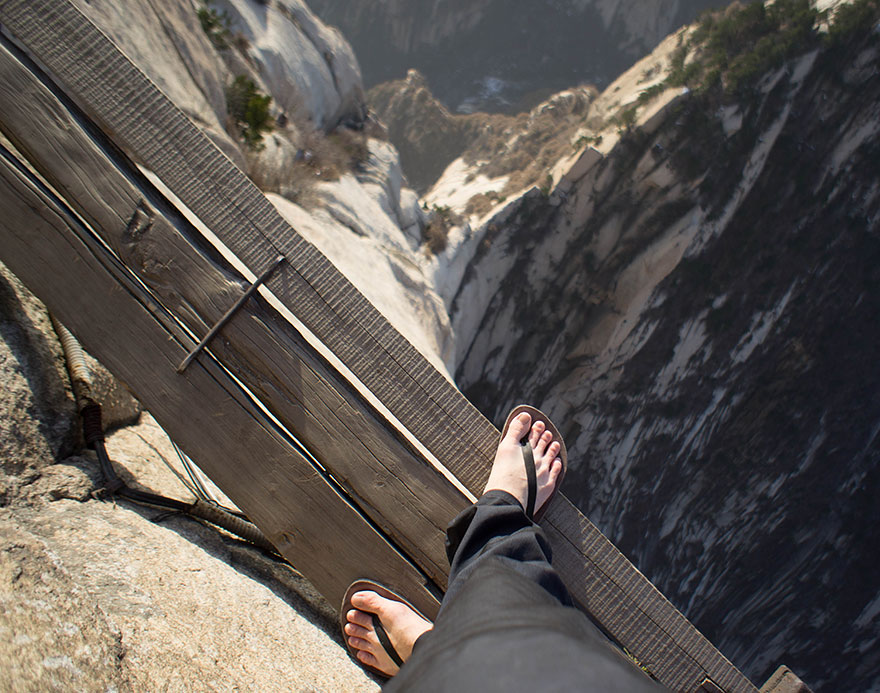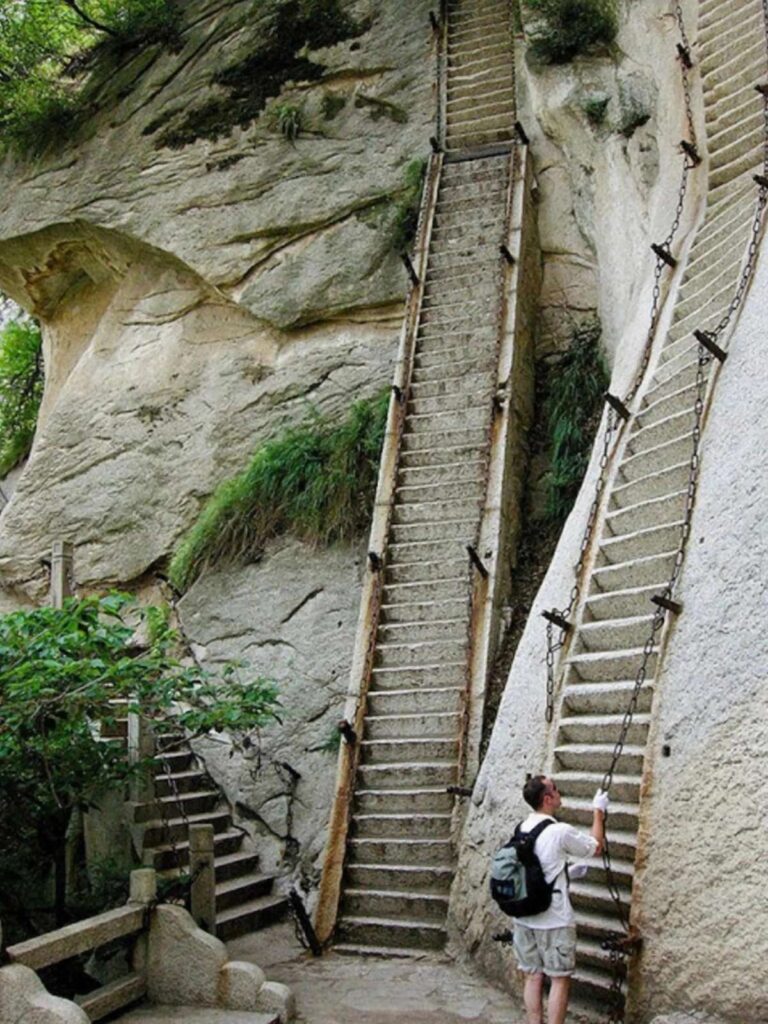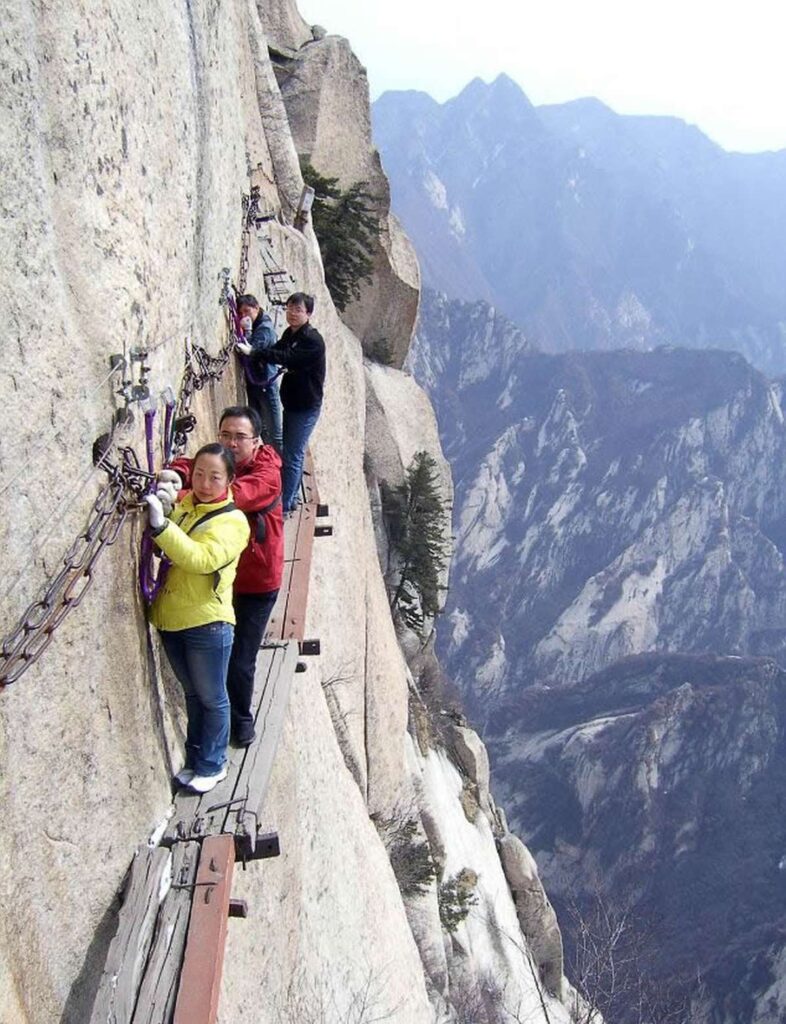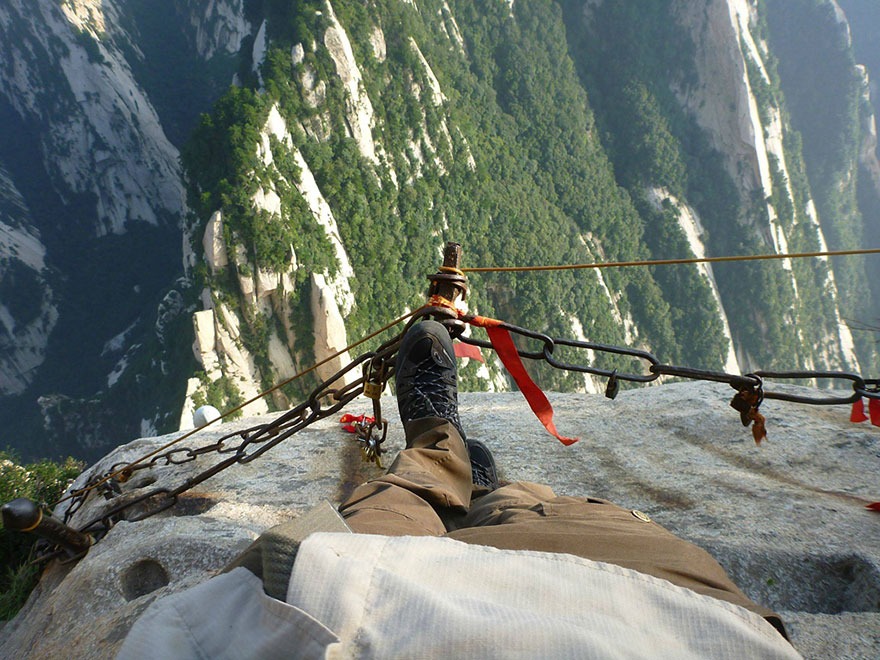
Nestled in the heart of China, Mount Hua Shan has earned its reputation as “the most precipitous mountain under heaven.” For thrill-seekers and adventure enthusiasts, the Hua Shan Trail promises an adrenaline-pumping journey coupled with awe-inspiring vistas. However, this trail is not for the faint of heart, as it involves steep stairs, narrow planks, and sheer cliffs that define danger at every turn.
If you are daring enough to embrace the challenge, the rewards are beyond compare—stunning scenery, ancient temples, and an indescribable sense of accomplishment await those who conquer the Hua Shan Trail.

Hua Shan, also known as Mount Hua, stands as one of the five sacred mountains of Taoism in China, its spiritual significance intertwined with its daunting physicality. Situated approximately 120 km from Xi’an, the ancient capital of China and home to the Terracotta Army, Hua Shan boasts five distinct peaks, each possessing its unique charm and nomenclature.

Among these peaks, the South Peak reigns supreme, soaring to an elevation of 2,160 meters above sea level. However, its lofty status is not without peril, as the trail leading to the South Peak is widely considered the most dangerous in the world. Carved into the rock, the ascent involves navigating steep stairs, traversing narrow planks affixed to cliff faces, and clinging to iron chains for dear life.

Whispers abound about the trail claiming up to 100 lives annually, though no official statistics corroborate these accounts. Sections of the trail bear ominous names like Thousand-Foot Precipice, Hundred-Foot Crevice, and Black Dragon Ridge, underscoring the inherent risks.
Embarking from the village of Huashan at the mountain’s base, intrepid hikers can opt for a six-kilometer winding path or a cable car ascent to the North Peak. From there, a choice unfolds—continue hiking to other peaks or embark on another cable car journey, this time to the West Peak.

The ultimate challenge lies between the North Peak and the South Peak, where the infamous plank walk beckons. A series of wooden planks bolted to the cliff side, this treacherous traverse demands a mere harness and chain for security. The planks are so narrow that sidestepping becomes the norm, occasionally requiring hikers to pause as others pass in the opposite direction. Avert your gaze downward if heights trigger fear, for the drop below extends for hundreds of meters, and sometimes, there are no planks at all.

Reaching the South Peak unveils a Taoist temple and a millennia-old tea house, an oasis where weary adventurers can rest and relish the panoramic view. The tea house’s history is steeped in the mountain’s lore, constructed by a monk who called Hua Shan home.

Sunrise and sunset from the South Peak offer breathtaking spectacles, revealing neighboring peaks and valleys shrouded in clouds on clear days.

Hiking the Hua Shan Trail is not a journey for everyone, but for the intrepid traveler drawn to adventure, nature, and culture, it stands as an unforgettable odyssey. Adequate preparation is key—don comfortable shoes and attire, carry ample water and snacks, adhere to safety guidelines, and, of course, don’t forget to capture the experience with your camera. The Hua Shan Trail beckons to those who seek both danger and beauty, offering an extraordinary tapestry woven with the threads of nature’s challenges and cultural richness.

Leave a Reply